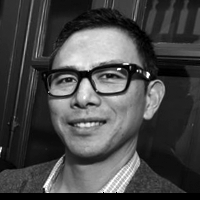 By John Bou, COO and Co-Founder, Modio Health
By John Bou, COO and Co-Founder, Modio Health
LinkedIn: John Bou
LinkedIn: Modio Health
The United States faces a profound challenge as our senior population grows at an unprecedented rate, with estimates projecting a doubling of Americans aged 65 and older to 80 million by 2040. This demographic shift is expected to intensify the strain on healthcare resources and exacerbate the provider shortage. There is an opportunity here for technology to help aging Americans and providers better face the demands of our aging population — but only if we can be smart about how it is applied.
Contrary to a common misconception, older adults are not averse to technology. In fact, studies show that 90% of seniors own laptops, and two-thirds use smartphones. Yet while there’s an openness among older Americans to embrace health-related technology, there are challenges. Studies have shown adoption of digital health platforms (DHP) and usage is low among elderly populations, even though they stand to benefit the most from the technologies. Research on DHP user intention and behaviors largely exclude feedback from people 65 and older, making it difficult to truly create something that will meet their needs.
Unfortunately, tech innovators often overlook older demographics as potential end users, reinforcing the already significant gap between what older adults want and what’s readily available. This oversight neglects the vast potential of this growing user base, a reality underscored by the fact that older adults are already engaging in various tech-enabled activities such as online bill payments, telehealth visits, and social media.
Harnessing technology’s potential to cater to the unique needs of aging populations is an untapped opportunity. Creating user-friendly, age-sensitive tech solutions and bolstering education and support systems can revolutionize healthcare for older adults in the digital age.
One key finding is that older adults prefer technology as a supplement rather than a replacement for their primary care providers (PCPs). Participants in one study “tended to prefer in-person care because of the greater potential for relationship building with their PCP; the opportunity for their PCP to observe them, to complete a physical examination, and to identify new problems that patients were unaware of; and because in-person visits allowed for laboratory testing and imaging to occur at the time of a visit.” They value their PCPs as the primary point of contact but also welcome technology that supports and enhances this relationship.
The healthcare sector urgently needs innovative tech solutions that assist in scaling services and efficiently triaging patients to appropriate care. The AgeTech Collaborative by AARP, for example, is working to fuel tech solutions that meet the needs of the growing number of older Americans. In 2021, the Biden administration proposed a $400 billion plan toward expanding access to home- or community-based care for aging relatives and people with disabilities. We’re also seeing more activity in funding for senior-focused digital health solutions over the past few years. Venture backers have invested more than $2.5 billion into eldercare and home health startups; however, this number represents less than 2% of total startup investment.
To alleviate the strain on healthcare resources, technology must bridge the supply-demand gap. With a diminishing provider supply and escalating demand, technology can act as a vital support system by facilitating triage, allowing physician assistants (PAs), nurses, and AI to efficiently manage patient care.
Moreover, preventive care plays a pivotal role in reducing future healthcare burdens. Increasingly, seniors are embracing wearables and healthcare apps, offering opportunities for early intervention and disease prevention. Education emerges as a key facilitator in promoting technology adoption among older adults, particularly for caregivers navigating complex healthcare systems. Simplifying access to resources, such as transportation services for medical appointments, can prevent health issues from escalating.
The surging senior population in the U.S. highlights a pressing challenge for our healthcare sector. The potential of technology to transform the landscape of senior care has immense potential; however, it hinges on thoughtful innovation. Health tech for seniors heavily relies on its user-centric design and scalability. By placing the needs and preferences of seniors at the forefront of technological advancements, we unlock an opportunity to enhance the quality of life for aging Americans and better equip healthcare providers to serve them. It is not merely about embracing technology but doing so with a thoughtful approach, ensuring that innovation aligns seamlessly with the unique demands of our aging population.
